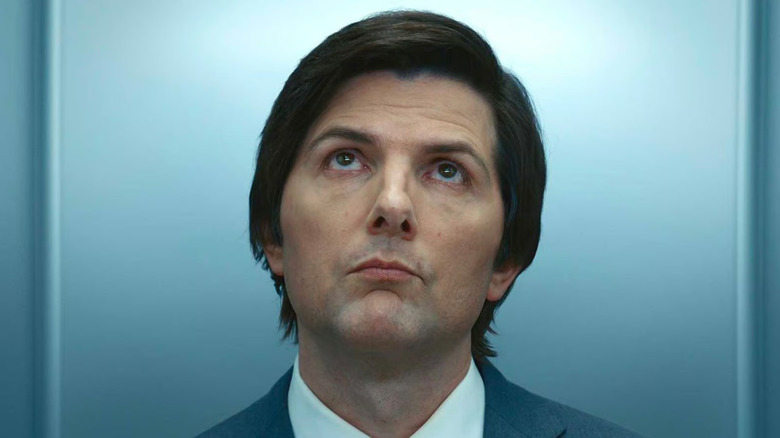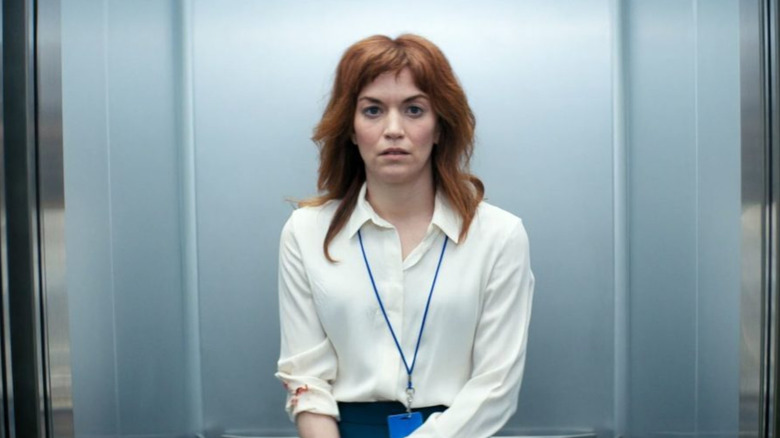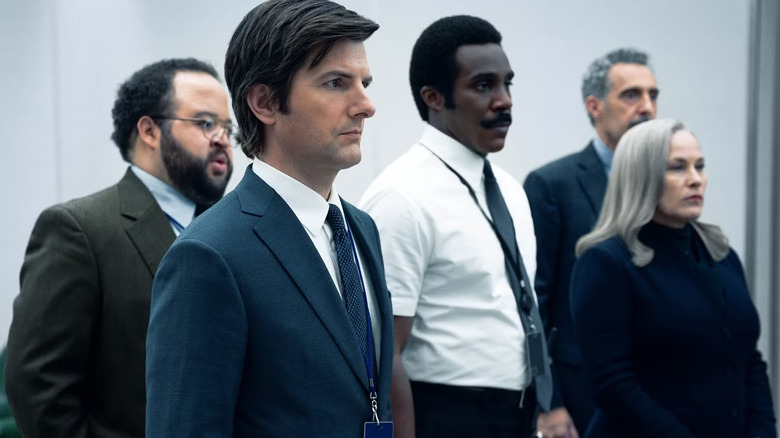How Scientifically Accurate Is Severance?
The premise of Dan Erickson's dystopian sci-fi series "Severance" is novel and intriguing. The main characters on the show work for a mysterious corporation called Lumon who have perfected a new kind of brain implant that offers its employees the perfect work/life balance. When Lumon employees ride an elevator to their office, a computer chip in their brains activates and erases all their memories of the outside world. When they are at the office, they only know the office. Then, at 5 p.m. when they exit the building, the chip flips back, restoring their memories of the outside world, but repressing all memories of their workday.
Another wrinkle: Lumon is so enigmatic and secretive that they don't let their office workers know anything about their outer selves, or their "outies." In order to maintain loyalty, "innies" are told fantastical stories about their "outies" that are most assuredly not true. What is Lumon doing? Why are they playing these weird memory games with their employees? The mysteries of "Severance" are vast and deep, and have been explored through the show's two extant seasons.
The questions are instantly tantalizing, and "Severance" has become the single most-watched show in Apple TV+ history because of its premise and its surreal mysteries (why is Lumon raising goats?). Another question also arises: is that even possible? Is there a way to "switch off" memories in a human brain that doesn't involve blunt-force trauma? Is there a way to subsume a person's entire personality and replace it with a tabula rasa, only to restore that personality later?
The folks at the Conversation have looked into it a little.
Can two sets of memories exist in the same brain?
The Conversation article pointed out that a certain kind of epilepsy surgery, pioneered in the 1940s, had doctors literally severing a patient's left and right cerebrum into unattached halves. After surgery, the patients' separated brain halves were then able to process information independently of one another. This didn't mean that the patients necessarily developed two separate personalities with two separate memory sets, but it did imply that such a thing might be possible. Indeed, some studies into "split brain" phenomenon began to arise in the 1970s about people who were flipping between two sets of memories. Of course, those studies examined what happened when both conflicting halves of a split-brain patient were active at the same time. One "half" would answer with speech, while the other would answer in writing, and the answers were different.
The Conversation article goes deeply into specific case studies, and the details are fascinating, but it's not quite what we witness on "Severance." In real-life, split-brain patients can recall certain things when they read and write, but other things when they speak. The left brain doesn't know what the right hand is doing, so to speak.
Instead, the "Severance" procedure might be tapping into the hippocampus of the brain to artificially instigate a split-brain effect, but this time with all the reading and writing skills left intact within both halves of the brain. As we all recall from high school biology, the hippocampus is the part of the brain that divides one's memories of the day up into easily-understood "episodes." Quibis, if you will. One can forget small details from Quibi to Quibi, but you always remember the whole arc of your day.
The Quibi brain principle
When you enter a new room, a new Quibi begins, and your brain kind of "forgets" what happened on the previous episode as it records a new one. The brain chips in "Severance" may very well be prolonging that forgetfulness, allowing a Lumon employee to forget everything about what came before the moment they stepped into the elevator. The fantastical element of the "Severance" chips is that they also seem to work the other way, erasing the work day when you leave the office ... and then restoring the first set of memories. The interplay within the hippocampus doesn't work that way, and the "severed" part of the brain couldn't be "severed back," as it were. Once you're watching a Quibi, it's permanent.
Also, on "Severance" the "innies" have new sets of memories and acquired skills all their own. The main characters (played by Adam Scott, Britt Lower, Zach Cherry, and John Turturro) work in the "macrodata refinement" department, a skill they don't know about in their outside lives. They know all about the rituals and history of Lumon on the inside. The hippocampus might reset every time you enter a room, but acquired skills and longer-term memories would stick around. The "Severance" brain chips are clearly doing something much more than dividing the two halves of the brain.
Also, it's established throughout "Severance" that the brain chips aren't contingent on walking through doors or being at the Lumon offices. Lumon managers actually have the abilities to flips the chips on and off on a whim, allowing the "innies" to walk around outside and vice versa. So this has a lot more going on than Quibi-ing the brain. The chips flip back and forth between two sets of memories that are alternately repressed. Because "innies" and "outies" have different memories and skills, they have different personalities. And this, we have to admit, is the stuff of science fiction.
But very good science fiction. Season 3 is coming. Get hype.


